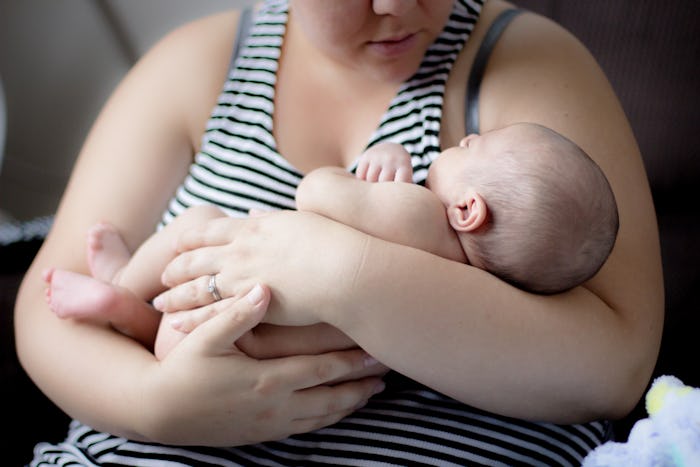News
Doctors Say Water Soak Is Fine For Labor, But Not For Birth, According To New Guidelines
For many mothers-to-be, part of the pregnancy process is thinking about what kind of birth experience they want to have if all goes well. Delivery preferences are, of course, something that are totally unique to each woman — some like the idea of hospital births, doctors and epidurals, while some opt for home births, or midwife-assisted deliveries in birthing centers. New guidelines from the American College of Obstetricians & Gynecologists (ACOG) though say that one delivery option you should definitely skip is giving birth in water. While doctors say a water soak is fine for labor, actually delivering a baby in water can potentially pose unnecessary risks to the baby.
The idea of a so-called "water birth" is honestly pretty lovely in theory. I mean, it makes total sense that it would feel nicer to push through contractions in a tub of water than on a hospital bed. Although actual research and scientific data on water birth is majorly lacking, according to Scientific American, the research that does exist suggests that, beyond just feeling nice, laboring in water can reduce the likelihood of getting an epidural by 10 percent, and can also reduce the overall length of labor by an average of 32 minutes. The risk of complications increases though the longer into labor a woman remains in the water, so ACOG now officially recommends that women who want to take advantage of the benefits of water birth get out of the tub before they are fully dilated, and most definitely before they deliver.
That's primarily because, according to ACOG, remaining in water after this point (referred to in the guidelines as "second-stage immersion") can increase the risk of serious delivery complications. An improperly disinfected tub, for example, or one filled with water that is too warm, or that has been standing for too long, can breed bacteria that could lead to a potentially fatal infection, and one study cited by ACOG also found that the risk of the umbilical cord snapping (called cord avulsion) is higher in immersion water births, at a rate of 1 in 288 births versus 1 in 1,361 non-immersion (aka, on-land) births. And while a commonly-held belief about water birth is that babies are protected from aspirating water by the so-called "diving reflex" which causes infants to hold their breath under water, research has found that's not always the case.
But aside from the potential risks of delivering in water, according to Fox News, there aren't really any specific benefits to it, either. The likelihood of perineal tearing for example, is about the same in and out of the water, as is the likelihood that a woman would end up with an episiotomy, or require a forceps-assisted delivery. And while ACOG acknowledges that some women may still request an immersion delivery despite this knowledge, it recommends that doctors fully inform patients of the potential risks, and avoid agreeing to it entirely if they feel like it "would be detrimental to the overall health and welfare of the woman or the fetus."
Part of the problem with second-stage immersion though is that doctors say there just isn't enough good information to go on that would truly allow mothers and their doctors to make a comprehensive medical decision one way or another. As Dr. Amos Grunebaum, chief of labor and delivery at New York Presbyterian Hospital Weill Cornell Medical Center, explained to Scientific American, the majority of hospitals in the United States don't even offer water births as an option to mothers, so the bulk of the births that are happening are likely taking place at home. And since planned home births already carry a higher risk of complications and death than planned hospital births (3.9 perinatal deaths per 1000 deliveries at home compared to 1.8 deaths per 1000 in hospital, according to a 2015 study in The New England Journal Of Medicine), it's also possible that at least part of the increased risk of water birth could be associated with that fact, too.
So what's the bottom line for pregnant women? According to ACOG, if you are healthy, your pregnancy is low-risk, and if you're at least 37 weeks along when you deliver (and not as far along as 42 weeks), laboring in water is likely safe and potentially beneficial — at least, until your cervix has fully dilated. But until more is known about the exact overall risk involved in giving birth in water, or being immersed in water in towards the end of labor, experts recommend that it's safest for both mom and baby to avoid it all together. Which honestly sounds like pretty solid, common sense advice, because at the end of the day, whatever gets a baby out in the safest way possible seems like the best way to go.
